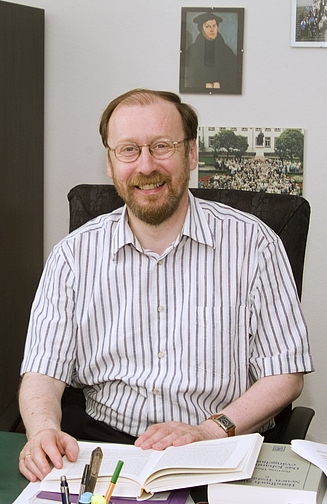 “Culture” is not perhaps the best word, but it’ll do for the moment. Udo Schnelle’s SNTS presidential address from last year has been published: U. Schnelle, ‘Das frühe Christentum und die Bildung’ NTS 61 (2015), 113-143.
“Culture” is not perhaps the best word, but it’ll do for the moment. Udo Schnelle’s SNTS presidential address from last year has been published: U. Schnelle, ‘Das frühe Christentum und die Bildung’ NTS 61 (2015), 113-143.The abstract shows how interesting (and controversial) this is:
Early Christianity is often regarded as an entirely lower-class phenomenon, and thus characterised by a low educational and cultural level. This view is false for several reasons. (1) When dealing with the ancient world, inferences cannot be made from the social class to which one belongs to one’s educational and cultural level. (2) We may confidently state that in the early Christian urban congregations more than 50 per cent of the members could read and write at an acceptable level. (3) Socialisation within the early congregations occurred mainly through education and literature. No religious figure before (or after) Jesus Christ became so quickly and comprehensively the subject of written texts! (4) The early Christians emerged as a creative and thoughtful literary movement. They read the Old Testament in a new context, they created new literary genres (gospels) and reformed existing genres (the Pauline letters, miracle stories, parables). (5) From the very beginning, the amazing literary production of early Christianity was based on a historic strategy that both made history and wrote history. (6) Moreover, early Christians were largely bilingual, and able to accept sophisticated texts, read them with understanding, and pass them along to others. (7) Even in its early stages, those who joined the new Christian movement entered an educated world of language and thought. (8) We should thus presuppose a relatively high intellectual level in the early Christian congregations, for a comparison with Greco-Roman religion, local cults, the mystery religions, and the Caesar cult indicates that early Christianity was a religion with a very high literary production that included critical reflection and refraction.
who did that?
ReplyDeleteThe image? That was me, sorry.
Deletespooky
ReplyDeleteWhat is the basis of confident statement 2?
ReplyDeleteI shall be reading it next week.
ReplyDeleteThe basis of Schnelle's "confident statement" is basically the 30 pages of his well-documented article, but he briefly states his argument on pp. 118-120.
ReplyDeleteAfter briefly reviewing the innumerable archaeological finds regarding education levels in the ancient world and citing valuable recent research, Schnelle cites p. 94 of R. Baumgarten's article "Elementar- und Grammatikunterricht: Griechenland," pp. 89-100 in Handbuch der Bildung und Erziehung in der Antike (ed. Christes, Klein, Lüth; Darmstadt: Wissenschaftliche Buchgesellschaft, 2006), which apparently states that in ancient cities probably most of the children went to elementary school, and when the very different grades of reading and writing abilities are included in the estimate, it may be assumed that around 30-50 percent of the population of middle and larger sized cities had an elementary knowledge of reading and writing. Then Schnelle lists his seven reasons in favor of relatively higher literacy in the early churches (anyways more than 50%) in comparison to the general population.
1. In the beginning period it is a matter mainly of urban churches, and the extent of literacy in the cities was notably higher than in the countryside.
2. A considerable part of the church members came from the sphere of influence of Judaism, which exhibited a higher literacy rate than the average in the Roman empire. Also the household slaves (cf. Phlm) who are linked to early churches must have been equipped with a higher-than-average grade of education.
3. A lively literary and intellectual life prevailed in the early churches. The Septuagint was studied, i.e. read aloud, read, and discussed. Paul made use of a secretary (cf. Rom 16:22), the Pauline Epistles were not merely read aloud (cf. 1 Thess 5:27), but the Apostle also took for granted that people took up his epistles with their own eyes to understand, thus that they read (cf. Gal 6:11: "See with what large letters I have written to you with my own hand"; further 1 Cor 16:21; Phlm 19).
4. The texts show that in the churches - as usual in the ancient world - reading loudly or reading aloud was predominant, which gave a special status to the oral tradition, so that also church members with lower writing and reading abilities could actively participate in church life. Furthermore, education was (and is) not identical with reading and writing competence, since one who could not (or could only in a limited way) read and write was not automatically uneducated.
5. Moreover, education was not tied to affiliation with social classes in the 1st century C.E.
6. From the beginning teachers were active in the churches (1 Cor 12:28; Gal 6:6; Rom 12:7b; Acts 13:1). Their duties were concentrated on the interpretation of the (oral or written) kerygma as well as the exegesis of written texts.
7. Above all, the multilingualism (Greek/Latin/Hebrew/Aramaic/local languages) of many church members, the creation of new literary genres (Gospels), and the superior themes handled in the Epistles (foremost in the Pauline Epistles) clearly demonstrate that a great linguistic and intellectual creativity prevailed in the new movement.
Schnelle closes this section by stating, "These central aspects shall now be pursued." And pursue he does!